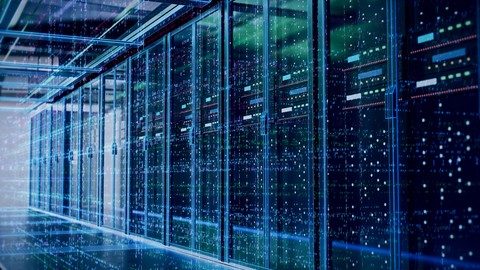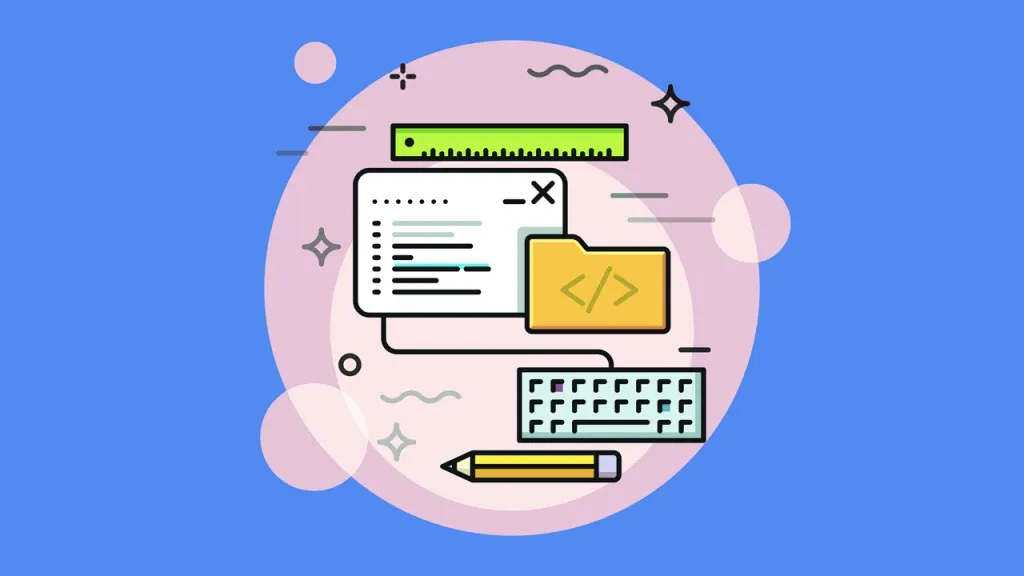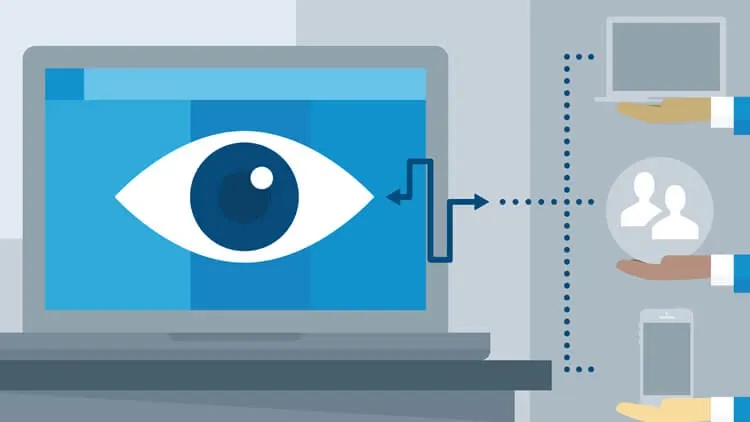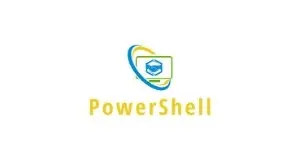This plan includes
- Limited free courses access
- Play & Pause Course Videos
- Video Recorded Lectures
- Learn on Mobile/PC/Tablet
- Quizzes and Real Projects
- Lifetime Course Certificate
- Email & Chat Support
What you'll learn?
- Introduction to virtualization and VMware vSphere
- Students will learn the basics of virtualization technology
- How vSphere fits into the overall virtualization landscape
- Students will gain a deep components, including the ESXi hypervisor, vCenter Server etc
- Resource Management: Students will learn how to manage and allocate resources such as CPU, memory, storage etc to virtual machines
- Storage Management: Students will learn about storage options in vSphere, including Fibre Channel, iSCSI, NFS, and VMFS
- Networking: Students will learn how to create and manage virtual networks in vSphere, including virtual switches, virtual NICs, and virtual switches.
- Virtual Machine Management: Students will learn how to create, manage, and migrate virtual machines, as well as how to perform basic operations
- High Availability : Students will learn how to implement high availability solutions in vSphere, including vSphere HA, vSphere DRS etc.
- By the end of the course, students should have a comprehensive understanding of how to install, configure, and manage a vSphere environment
Course Overview
Pre-requisites
- Basic understanding of Operating System and Computer Networking
Target Audience
- vSphere course is suitable for anyone who is interested in virtualization and cloud computing, and who wants to deepen their knowledge and skills in this area.
Curriculum 106 Lectures 15:48:21
Section 1 : Introduction
Section 2 : Regarding Virtualization
- Lecture 1 :
- What is Virtualization
- Lecture 2 :
- Types of Virtualization ?
Section 3 : Traditional Data Centers
- Lecture 1 :
- Understanding What Traditional Datacenter
- Lecture 2 :
- Is Installing Multiple Applications On One Server Possible ?
- Lecture 3 :
- Drawbacks of Installing Multiple Applications On One Server
- Lecture 4 :
- One is to One Ratio Advantages
- Lecture 5 :
- Drawbacks of Traditional Data Centers
- Lecture 6 :
- What Is The Reason Of Installing The Traditional Data Center
- Lecture 7 :
- What Solution We Need ?
- Lecture 8 :
- Server Virtualization Is The Solution
Section 4 : Virtualization History
- Lecture 1 :
- Virtualization History
Section 5 : Regarding Vmware
- Lecture 1 :
- What is Vmware
- Lecture 2 :
- First Company To Virtualize x86 Architecture
- Lecture 3 :
- VMware Customers
- Lecture 4 :
- VMware Products
Section 6 : Regarding vSphere
- Lecture 1 :
- What is vSphere ?
- Lecture 2 :
- Hypervisor
- Lecture 3 :
- Hypervisor Types
- Lecture 4 :
- Type 2 Hypervisor
- Lecture 5 :
- Types 2 Hypervisor Examples
- Lecture 6 :
- Type 1 Hypervisor
- Lecture 7 :
- Types 1 Hypervisor Examples
Section 7 : Regarding ESXi
- Lecture 1 :
- What is ESXi?
- Lecture 2 :
- ESXi Shares The Resources With VMs
- Lecture 3 :
- DCUI
- Lecture 4 :
- VMware host client
- Lecture 5 :
- What are different Virtual Machine Files?
- Lecture 6 :
- Creating A Virtual Machine
- Lecture 7 :
- Installing Windows Server Operating System On VM
- Lecture 8 :
- Installing vm tools and Exploring options
- Lecture 9 :
- What are Roles and How to assign the existing roles to users?
- Lecture 10 :
- How to create the new roles and assign them to users?
- Lecture 11 :
- Installing Second ESXi Host
- Lecture 12 :
- Lab Hardware Requirements
- Lecture 13 :
- Configuring ESXi Host
- Lecture 14 :
- Downloading and Installing VMware Workstation
- Lecture 15 :
- Installing First ESXi Host
- Lecture 16 :
- Accessing ESXi Host Remotely and Exploring The ESXi Options
- Lecture 17 :
- Downloading ESXi ISO Image and Hardware Compatibility Guide
- Lecture 18 :
- Lab Software Requirements
Section 8 : vCenter Server..
- Lecture 1 :
- What is vCenter Server?
- Lecture 2 :
- Other Uses Of The vCenter Server?
- Lecture 3 :
- Vcenter Theory Part1
- Lecture 4 :
- Vcenter Theory Part 2
- Lecture 5 :
- Installing vCenter Server, Creating Datacenters and Adding Hosts
- Lecture 6 :
- vCenter Server Options
Section 9 : Cloning
- Lecture 1 :
- What is Cloning and How to create it?
- Lecture 2 :
- What is Template and How to Create it?
- Lecture 3 :
- Template Options
Section 10 : Vmware vSphere Networking Basic Concepts
- Lecture 1 :
- Network and Networking
- Lecture 2 :
- Editing vSwitch
- Lecture 3 :
- Virtual Switch Ports
- Lecture 4 :
- Editing vSwitch Settings MTU and Security
- Lecture 5 :
- Editing vSwitch Settings NIC Teaming
Section 11 : Storage Area Network (SAN)..
- Lecture 1 :
- What is SAN and its types?
- Lecture 2 :
- iSCSI SAN
- Lecture 3 :
- FC SAN
- Lecture 4 :
- NAS and SAN Lab
- Lecture 5 :
- Creating Standard Switch From vCenter Server
Section 12 : Migrating VMs
- Lecture 1 :
- Cold Migration
- Lecture 2 :
- When we perform Cold Migration?
- Lecture 3 :
- What is vMotion?
- Lecture 4 :
- When should we use vMotion?
- Lecture 5 :
- What are the vMotion Prerequisites?
- Lecture 6 :
- vMotion Lab
- Lecture 7 :
- Storage vMotion with Lab
- Lecture 8 :
- What is Enhanced vMotion?
- Lecture 9 :
- Enhanced vMotion Lab
Section 13 : About High Availability (HA)
- Lecture 1 :
- What is High Availability (HA)?
- Lecture 2 :
- High Availability Needs Cluster
- Lecture 3 :
- What is a cluster?
- Lecture 4 :
- Cluster Heartbeat
- Lecture 5 :
- How vSphere HA reacts to Host Failure?
- Lecture 6 :
- How vSphere HA reacts to Network Isolation?
- Lecture 7 :
- Selecting Master and Slave
- Lecture 8 :
- HA against Operating System and Applications
Section 14 : About DRS
- Lecture 1 :
- What is DRS?
- Lecture 2 :
- DRS and Storage DRS
- Lecture 3 :
- DRS Affinity and Anti Affinity Rules
- Lecture 4 :
- DRS Does 3 Tasks
- Lecture 5 :
- DRS Prerequisites
- Lecture 6 :
- DRS Lab 1
- Lecture 7 :
- DRS Lab 2
- Lecture 8 :
- DRS Lab 3
- Lecture 9 :
- DRS Affinity and Anti Affinity Lab
- Lecture 10 :
- What Is Predictive DRS?
Section 15 : About Proactive HA
- Lecture 1 :
- What is Proactive HA?
- Lecture 2 :
- DRS relation with Proactive HA
- Lecture 3 :
- Proactive HA Modes
Section 16 : About Snapshot
- Lecture 1 :
- What is Snapshot and its scenarios
- Lecture 2 :
- Understanding Scenario 1 and 2 With Examples
- Lecture 3 :
- Snapshot Lab
Section 17 : Virtul Machine Settings…
- Lecture 1 :
- Virtual Hardware
- Lecture 2 :
- VM Options
Section 18 : About Host Profile
- Lecture 1 :
- What Is Host Profile With Lab
Section 19 : Advanced Networking Concepts
- Lecture 1 :
- Standard Switch Drawbacks
- Lecture 2 :
- What is Distributed Switch?
- Lecture 3 :
- Distributed Switch: Port Groups
- Lecture 4 :
- Distributed Switch Architecture
- Lecture 5 :
- Distributed Switch Lab
- Lecture 6 :
- Distributed Switch: General Settings
- Lecture 7 :
- Distributed Switch: Advanced Settings
- Lecture 8 :
- Distributed Switch: Traffic Shaping Settings
- Lecture 9 :
- Private VLAN
- Lecture 10 :
- Private VLAN Groups
Our learners work at
Frequently Asked Questions
How do i access the course after purchase?
It's simple. When you sign up, you'll immediately have unlimited viewing of thousands of expert courses, paths to guide your learning, tools to measure your skills and hands-on resources like exercise files. There’s no limit on what you can learn and you can cancel at any time.Are these video based online self-learning courses?
Yes. All of the courses comes with online video based lectures created by certified instructors. Instructors have crafted these courses with a blend of high quality interactive videos, lectures, quizzes & real world projects to give you an indepth knowledge about the topic.Can i play & pause the course as per my convenience?
Yes absolutely & thats one of the advantage of self-paced courses. You can anytime pause or resume the course & come back & forth from one lecture to another lecture, play the videos mulitple times & so on.How do i contact the instructor for any doubts or questions?
Most of these courses have general questions & answers already covered within the course lectures. However, if you need any further help from the instructor, you can use the inbuilt Chat with Instructor option to send a message to an instructor & they will reply you within 24 hours. You can ask as many questions as you want.Do i need a pc to access the course or can i do it on mobile & tablet as well?
Brilliant question? Isn't it? You can access the courses on any device like PC, Mobile, Tablet & even on a smart tv. For mobile & a tablet you can download the Learnfly android or an iOS app. If mobile app is not available in your country, you can access the course directly by visting our website, its fully mobile friendly.Do i get any certificate for the courses?
Yes. Once you complete any course on our platform along with provided assessments by the instructor, you will be eligble to get certificate of course completion.
For how long can i access my course on the platform?
You require an active subscription to access courses on our platform. If your subscription is active, you can access any course on our platform with no restrictions.Is there any free trial?
Currently, we do not offer any free trial.Can i cancel anytime?
Yes, you can cancel your subscription at any time. Your subscription will auto-renew until you cancel, but why would you want to?
Instructor

15318 Course Views
3 Courses



 Tech & IT
Tech & IT
 Business
Business
 Coding & Developer
Coding & Developer
 Finance & Accounting
Finance & Accounting
 Academics
Academics
 Office Applications
Office Applications
 Art & Design
Art & Design
 Marketing
Marketing
 Health & Wellness
Health & Wellness
 Sounds & Music
Sounds & Music
 Lifestyle
Lifestyle
 Photography
Photography


















